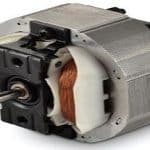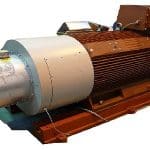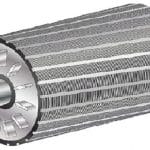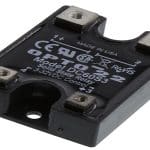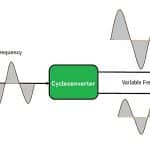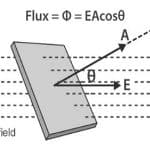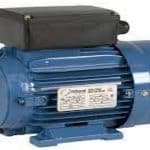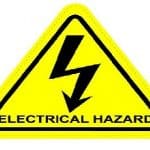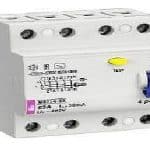The shaded-pole motor plays a significant role in low-torque applications. Although these motors have some limitations in terms of efficiency & starting torque, so current technological developments assure an enhanced & more sustainable future for these types of motors. Understanding this motor’s working principles, benefits, and drawbacks with its applications is essential for choosing the right electric motor for a particular application. This … [Read more...]
Induction Generator : Construction, Working, Circuit, Types, Differences & Its Applications
Induction generators have become very popular choices to use in various applications because they are capable of operating at variable speeds & handling fluctuating loads. So these generators have an assuring future within renewable energy systems as well as other applications because of their ongoing investigation & efforts in development. As development efforts and investigation address the challenges which are associated with these generators … [Read more...]
Squirrel Cage Induction Motor : Construction, Working, Types, Differences & Its Applications
An induction motor is a type of electric motor that uses AC, pushed by a magnetic field that turns. These motors are designed with a rotor, a stator & coil that changes energy from electrical to mechanical with electromagnetic induction. Induction motors are very flexible, efficient, and very simple to design, and allow them to be used with almost any electrical load. There are mainly two kinds of induction motors exist like; Squirrel cage & slip … [Read more...]
Proximity Effect : Working, Affecting Factors, Differences, Advantages, Disadvantages & Its Applications
Understanding & mitigating the proximity effect is significant in the electrical system design & operation which uses high-frequency AC. The strength of this effect can be influenced by the conductor's structure, diameter & material. The impact of this effect can be reduced by right conductor spacing and geometric arrangement and also decrease power loss, its detrimental effects on resistance & performance of inductor. It is achievable to … [Read more...]
Solid State Relay : Block Diagram, Circuit, Working, Types, Differences & Its Applications
Generally, both electromechanical and solid-state relays are similar, but solid-state relays electrically isolate the low-voltage input from the output that simply switches and controls an electric load. Electro-mechanical relays have a limited contact life cycle, so they have slower switch speeds, particularly in contractors and large power relays, whereas solid-state relays do not have such limitations. The solid-state relay (SSR) doesn’t have any moving … [Read more...]
Cycloconverter : Circuit, Working, Types, Control Strategies, Characteristics & Its Applications
A power supply is used to change the electric current from a source to the voltage, frequency & current to power the electric load. Sometimes these are called electric power converters. Power supply is classified into two categories; AC & DC power supply. We know that AC power is more economical and it can be used for transmission thus most of the electrical devices or machines run on AC power. However, the typical frequency & voltage supplied … [Read more...]
Electric Flux : Formula, Types, Properties, Different Surfaces & Its Applications
Electric flux is a basic concept within physics that assists us in understanding as well as measuring the electric field supplied throughout a given surface. This is an electric field property in the number of electric force lines intersecting a given region. This flux gives a means to explain electric field lines flow throughout an area. Electric field lines are simply considered to originate on positive electric charges & to terminate on negative … [Read more...]
Capacitor Start Motor : Circuit, Working, Phasor Diagram, Characteristics, Advantages & Its Applications
A capacitor motor is a single-phase induction motor that has two windings; the main winding and auxiliary winding. The main winding gets energy from the power line directly whereas a secondary winding like auxiliary winding gets energy throughout a capacitor. This kind of motor has some benefits like higher starting and running torque. The currents within this motor’s two windings will differ in phase & producing torque. There are three kinds of … [Read more...]
Electrical Hazard : Causes, Types, Do’S and Dont’S, Examples & Control Measures
In an electric field, working with electricity is not safe when workers don’t identify and control electrical hazards properly. However, lack of knowledge, failure to identify potential hazards, and not enough training cause electric shocks, fire hazards, and explosions. Most of these hazards were caused mainly by direct contact with machines, overhead transmission lines hand-carried metallic objects & contact with tools. So protecting ourselves … [Read more...]
Earth Leakage Circuit Breaker : Circuit, Working, Types, Differences, Advantages & Its Applications
The flow of current from the live conductor to the earth throughout an unintended lane is known as earth leakage. So it may supply in between their poor insulation (or) throughout a person’s body & cause electrical shock. The effect of this electrical shock causes damage to a device or a person if the leakage current goes beyond 30mA. So, protection devices like ELCB or earth leakage circuit breakers are used to separate the power source whenever … [Read more...]
